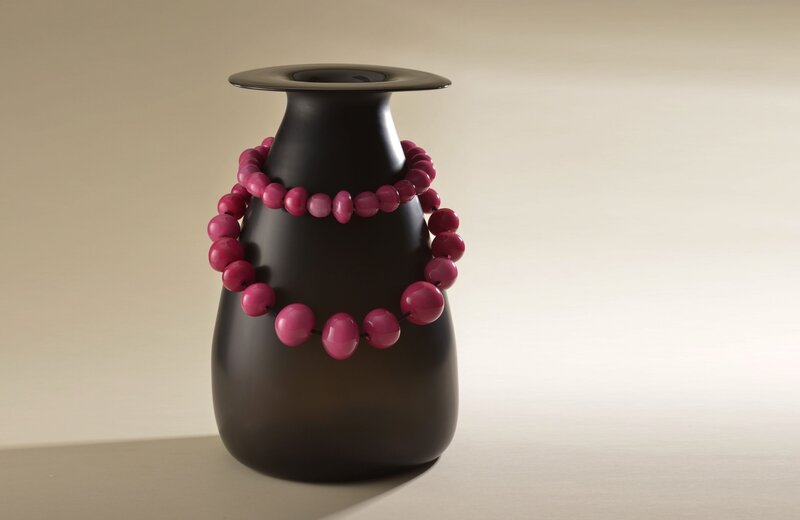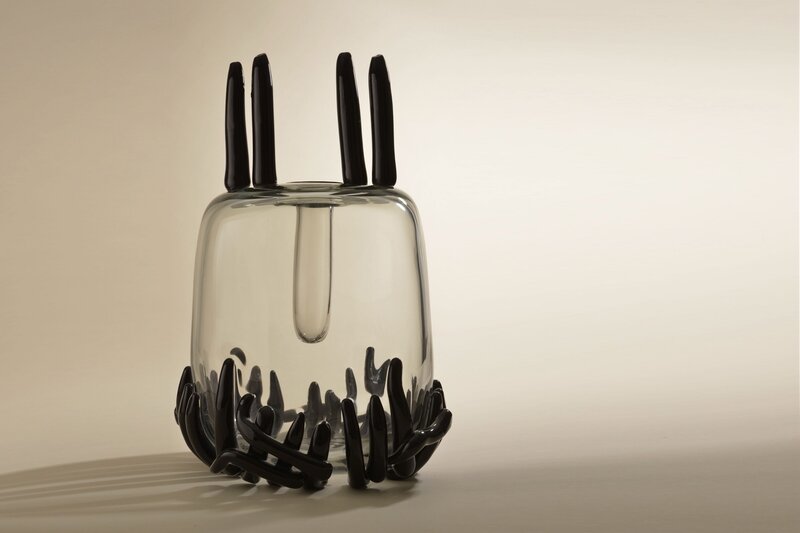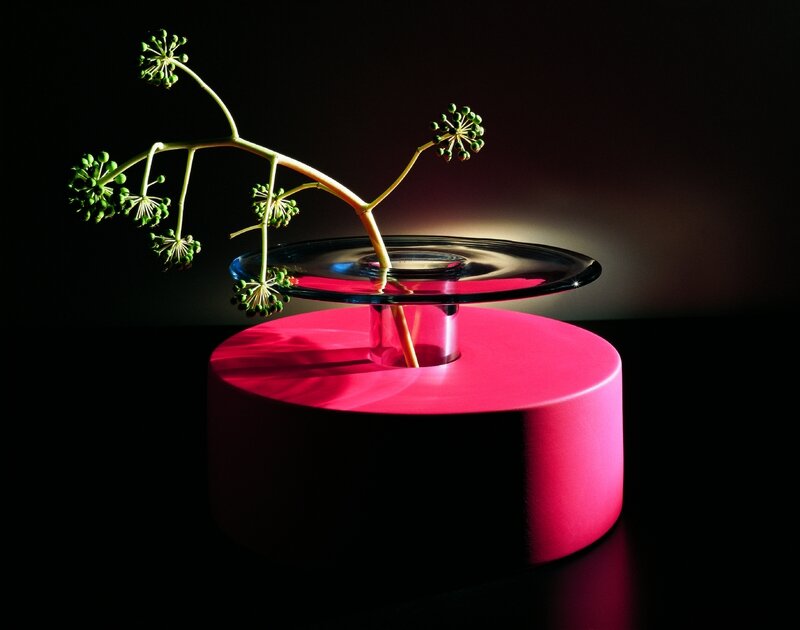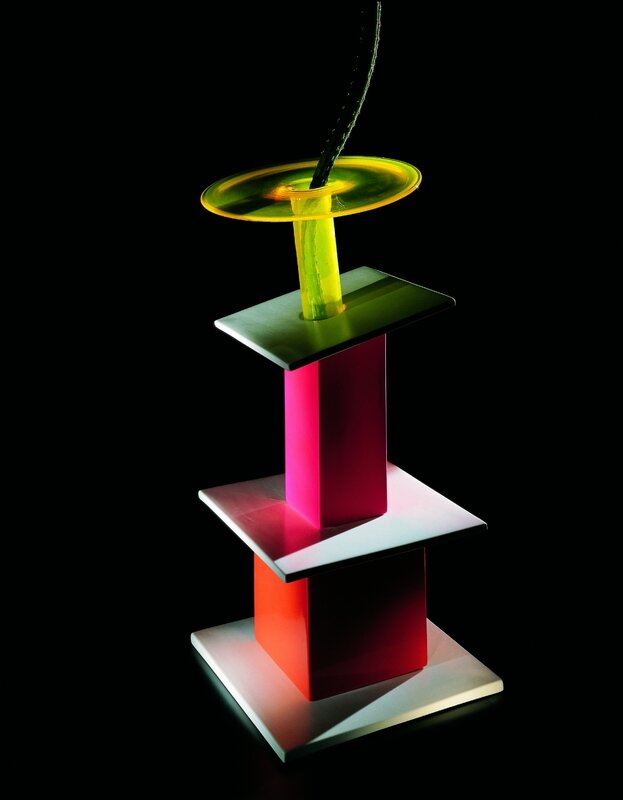Ettore Sottsass: The Glass at Venice, Island of San Giorgio Maggiore, 10 April - 30 July 201
Ettore Sottsass, Kachina 05, 2009-11, CIRVA. © Ph Jean BERNARD
LE STANZE DEL VETRO will celebrate the 100th anniversary of the birth of Italian architect Ettore Sottsass with an exhibition entirely dedicated to his glass and crystal production; more than 200 works will be on display - mostly from the Ernest Mourmans collection - many of which on show for the first time.
For the 100th anniversary of the birth of Ettore Sottsass (1917 – 2007) LE STANZE DEL VETRO will celebrate his glass production with the exhibition Ettore Sottsass: The Glass, curated by Luca Massimo Barbero, Director of the Institute of Art History of Fondazione Giorgio Cini. The exhibition will run on the Island of San Giorgio Maggiore in Venice from 10th April to 30th July 2017, featuring more than 200 works, many of which on show for the first time, with an innovative exhibition set-up design by Annabelle Selldorf Studio. It will be the first exhibition ever entirely dedicated to the glass and crystal production of the Italian designer. The exhibition will be accompanied by the first Catalogue raisonné of the complete glass production by Sottsass, published by Skira.
Ettore Sottsass, Kachina 10, 2009-11, Vetro soffiato e Corian® © Ph Jean BERNARD
Ettore Sottsass was inclined towards painting but his father convinced him to study Architecture. In 1946 he moved to Milan, where he collaborated with the Triennale, overseeing the set-up of the handcrafts sections.
On this occasion he experimented with glass for the first time (his first glass object is dated 1947). He continued to use glass throughtout his artistic life, collaborating with some of the most important glassworks of the time, such as: Vistosi, Toso Vetri d’Arte, Cenedese, Venini – to mention just a few. The exhibition Ettore Sottsass: The Glass recounts the various phases of these collaborations, featuring more than 200 works and designs, dating between1947 and 2007.
Ettore Sottsass, Kachina 16, 2009-11, CIRVA © Ph Jean BERNARD
“Glass is an incredible medium, very mysterious, transparent and fragile at the same time” – Sottsass stated on occasion of one of his last public appearances. – “Needless to say that beyond glass one finds a whole universe of centuries-old traditions. For one of the first Triennale exhibitions, after the war, I was asked to design a glass object. I remember that at the time we used to design balls with a scottish pattern, with interwoven clear and dark stripes. It was my first experience of the kind.” – Sottsass was fascinated with the almost “magical” aspects of glass making: – “Glass, as well as ceramics, has a very peculiar trait: one does not really know what it is that goes into the furnace. Then all of a sudden a pure object breaks out, burnt by fire, an object of sheer purity, and physical intangibility. It is like a vision. One is deeply involved when making glass. Glass is spectacular.” –
Though Sottsass had contacts with the Island of Murano since the 1940s, it was only in the 1970s that Sottsass fully experimented with the potential of glass with the first series he produced for the Vistosi glassworks. Subsequently, after the foundation of the Memphis group (1981), he designed unique glass sculptures with the collaboration of the craftsmen of the Toso glassworks: glass objects with outstanding traits, highlighting the shades and transparency of the medium, no longer mere containers. On this occasion he introduced the use of chemical glue, challenging the centuries-old tradition of Murano glass. He also worked for Venini, designing magnificent lamps as well as decorative objects with no real practical use, showing sophisticated color combinations by superposing different layers of glass.
Ritratto di Ettore Sottsass, © Ph Bruno Gecchelin
“Sottsass’s glass works are complex bodies, designed as human characters.” – explains Luca Massimo Barbero, the curator of the exhibition – “The artist-architect breaks through the technical boundaries of the objects using materials such as glass, plastic and Corian and brings them to life. They are compound materials in some ways similar to glass, a pure and mysterious medium, which stems from an alchemy between natural elements transformed by fire. Ettore Sottsass: The Glass is an exhibition that brings Murano glass into the present with a vitality that projects it into the future.”
To exemplify the strength, the curiosity and the creative originality of Sottsass’s experimentation with glass, one of the galleries of the exhibition will be dedicated to an innovative series of sculptures, designed by Sottsass in 1999 at the request of the Sheik of Qatar, Saud Al Thani, for his ‘Millenium House’: 21 glass sculptures, of different dimensions, some over a meter tall, produced at the Cenedese glassworks in Murano, on display for the first time.
Ettore Sottsass, Allodola, 2003, VETRERIA ETRUSCA © Ph Riccardo Bianchi
At the end of the 1980s, Sottsass also began to experiment with other techniques not in use in Murano and produced glass pieces together with industrial companies such as Alessi, Baccarat, Egizia, Fontana Arte, Serafino Zani and Swarovski, where he encountered both the precision of industrial glass and the centuries-old tradition of crystal glass.
The exhibition will also feature 200 works, among which those produced in collaboration with the research center Cirva in Marseille, where as of 2004 Sottsass designed the Kachinas series, inspired by the Pueblo votive dolls by the same name.
The exhibition Ettore Sottsass: The Glass will be complemented by a catalogue, published by Skira, with contributions by Luca Massimo Barbero, Cristina Beltrami, Françoise Guichon and Marino Barovier and a broad iconographic apparatus including many drawings and images recounting 50 years of glass production.
Ettore Sottsass, Upupa, 2003, VETRERIA ETRUSCA © Ph Riccardo Bianchi

/https%3A%2F%2Fprofilepics.canalblog.com%2Fprofilepics%2F1%2F0%2F100183.jpg)
/https%3A%2F%2Fstorage.canalblog.com%2F03%2F02%2F119589%2F96711876_o.jpg)
/https%3A%2F%2Fstorage.canalblog.com%2F11%2F31%2F119589%2F94773502_o.jpg)
/https%3A%2F%2Fstorage.canalblog.com%2F20%2F83%2F119589%2F94772815_o.jpg)
/https%3A%2F%2Fstorage.canalblog.com%2F26%2F72%2F119589%2F75604929_o.jpg)
/https%3A%2F%2Fstorage.canalblog.com%2F59%2F60%2F119589%2F26458628_o.jpg)








/image%2F1371349%2F20240429%2Fob_94d73d_artofthe-2.jpg)
/image%2F1371349%2F20240429%2Fob_a32180_438086347-1659660838137262-66806538687.jpg)
/image%2F1371349%2F20240429%2Fob_5853a1_440937185-1660184551418224-14760604465.jpg)
/image%2F1371349%2F20240428%2Fob_096a92_telechargement-10.jpg)